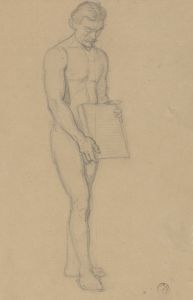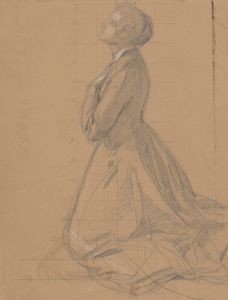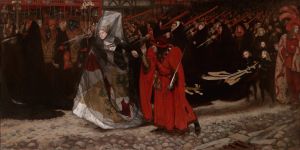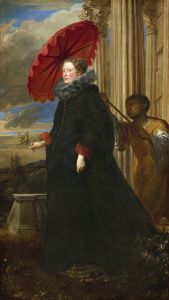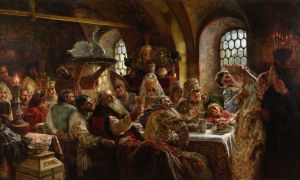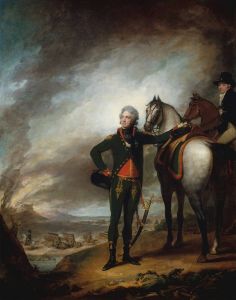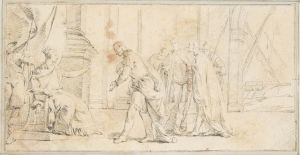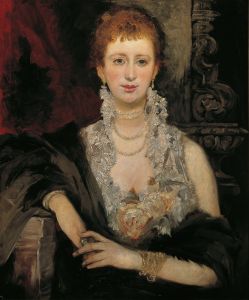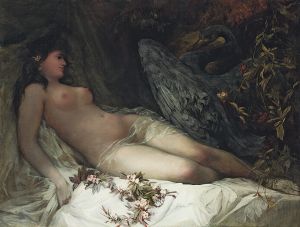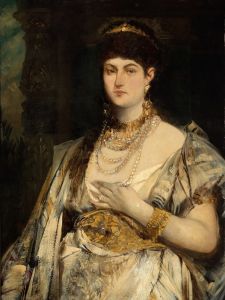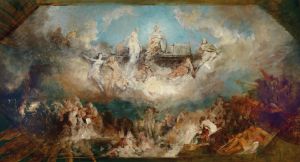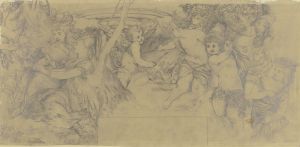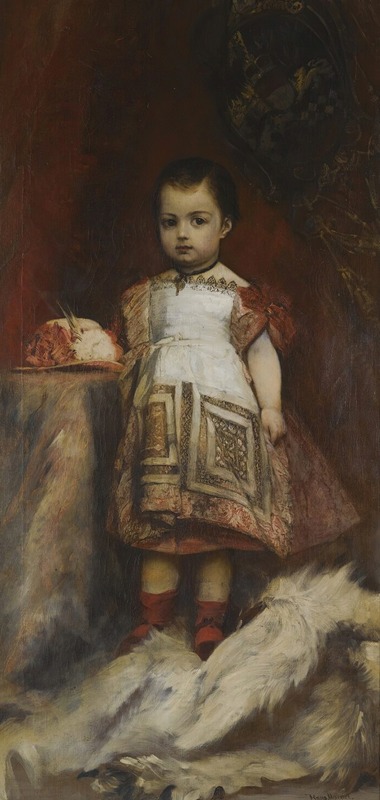
Prince Gottfried Zu Hohenlohe-Schillingsfürst
A hand-painted replica of Hans Makart’s masterpiece Prince Gottfried Zu Hohenlohe-Schillingsfürst, meticulously crafted by professional artists to capture the true essence of the original. Each piece is created with museum-quality canvas and rare mineral pigments, carefully painted by experienced artists with delicate brushstrokes and rich, layered colors to perfectly recreate the texture of the original artwork. Unlike machine-printed reproductions, this hand-painted version brings the painting to life, infused with the artist’s emotions and skill in every stroke. Whether for personal collection or home decoration, it instantly elevates the artistic atmosphere of any space.
Hans Makart, an Austrian painter known for his historicist style and vibrant use of color, created the portrait "Prince Gottfried Zu Hohenlohe-Schillingsfürst." This painting is a notable example of Makart's ability to capture the grandeur and elegance of the European aristocracy during the 19th century.
Prince Gottfried zu Hohenlohe-Schillingsfürst was a member of the prominent Hohenlohe family, which held significant influence and power in the German-speaking regions of Europe. The Hohenlohe family had a long history of nobility, with roots tracing back to the medieval period. The family was known for their political and military involvement, as well as their patronage of the arts.
Hans Makart, born in 1840 in Salzburg, Austria, was a leading figure in the Vienna art scene during the late 19th century. He was renowned for his large-scale historical paintings, portraits, and allegorical works. Makart's style was characterized by its dramatic compositions, rich color palette, and meticulous attention to detail. His work was highly sought after by the European elite, and he became a favorite of the Austrian aristocracy.
The portrait of Prince Gottfried zu Hohenlohe-Schillingsfürst exemplifies Makart's skill in portraying the nobility with a sense of grandeur and sophistication. The painting captures the prince in a dignified pose, dressed in elaborate attire that reflects his high social status. Makart's use of color and light enhances the regal quality of the portrait, highlighting the prince's features and the luxurious textures of his clothing.
Makart's ability to convey the personality and status of his subjects made him one of the most celebrated portraitists of his time. His works were not only admired for their aesthetic qualities but also for their ability to capture the essence of the individuals he painted. The portrait of Prince Gottfried zu Hohenlohe-Schillingsfürst is a testament to Makart's talent and his significant contribution to the art of portraiture.
Throughout his career, Makart received numerous commissions from the aristocracy and was highly regarded by his contemporaries. His influence extended beyond the realm of painting, as he also played a role in the development of interior design and the decorative arts. Makart's studio in Vienna became a cultural hub, attracting artists, writers, and musicians who were inspired by his work.
The legacy of Hans Makart and his portraits, including that of Prince Gottfried zu Hohenlohe-Schillingsfürst, continues to be appreciated by art historians and enthusiasts. His ability to capture the opulence and elegance of the 19th-century European aristocracy has left a lasting impact on the world of art.
In summary, the portrait of Prince Gottfried zu Hohenlohe-Schillingsfürst by Hans Makart is a significant work that showcases the artist's mastery in depicting the nobility with grandeur and sophistication. The painting reflects the historical and cultural context of the time, highlighting the prominence of the Hohenlohe family and Makart's esteemed position in the art world.





